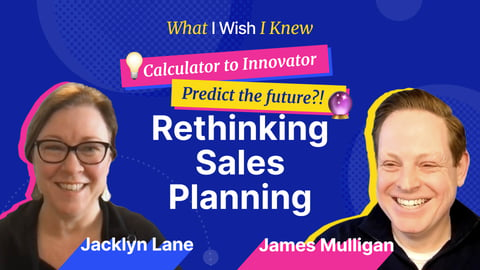In the last year, many articles and experts have focused on the "economy." Some have called it the Client Economy, the Data Economy, the Digital Economy, or the AI Economy. Each thin slice of this view misses its mark. We are actually in the "Evidence Economy."
These subcategories of data, digital, client, and analytic all ask for the same outcome. They seek Evidence to make better decisions and provide better outcomes. I say "better" because, with the change in the data, digital, or client results, we reevaluate the analytics to produce better Evidence. Evidence is a product of trusted data, testing, and context.
We have been gathering, and in some cases hoarding, data for several decades. Companies have created data marts, data silos, data warehouses, ERP systems, and recently, a focus on CRM data. We've got data covered, thank you. I'm full. What I really need is understanding.
JUST BECAUSE WE MEASURE DOESN'T MEAN WE KNOW
Understanding starts with testing data. We see this, as an example, in marketing. Marketing uses A/B testing. Anything that goes out the door of a marketing team has variations. Digital advertisements may test slightly different wording, different call to action buttons, or design elements. These target similar groups but the individuals in those groups. Results from this testing show which sample performs best, to inform the most effective marketing campaign.
Similarly, in data testing, we need to be cautious. There are trouble spots in assumptions we need to avoid, like Simpson's Paradox, which identifies casualty in the data. Mishandling either the data or the testing can lead to misleading data. Just collecting and analyzing the data isn't enough for understanding.
Results can be skewed based on the bias unintentionally introduced into the interpretation of data collection. In short, data without context is just a point of data. To apply context isn't enough. It has to be the right context. David Wilkinson in the Oxford Review provides an example of the way Human Resources defines a "sick day" over time changes the context from data. Without that context, understanding the data can lead you to wrong interpretations, e.g., "people are getting sick more frequently," rather than "one person sustained a long illness."
EVIDENCE HAS PERSPECTIVE, DATA WITHOUT CONTEXT DOES NOT
"Evidence," as Wilkinson points out, "has a perspective, while data doesn't."
When we take a step back from trying to interpret this age, epoch, or economy, we need to look at the perspective. Each of the claimed areas for the Data-Driven Economy, Engagement Economy, or Analytics Economy, are all striving to support a view. Each wants you to believe that the emotional connection to the claim is genuine, because you feel that outcome, and they can provide data to lead you to this result. By definition, these claims are all seeking evidence, all trying to give the context, and, from a higher perspective, we can see that they contribute to the broader "Evidence Economy."
WHY IS THIS DISTINCTION IMPORTANT?
In business, we rely on data at every level. Data can point us to the wrong decision making without proper context. "Data-Driven Decision Making" has become a popular term but can also contribute to bad decision making. With the appropriate context and hypothesis, the evidence provides better decision making and better actions. Better, because the data can always be improved, cleansed, and the context clarified. With a change in scrutiny level from data to evidence, organizations improve their processes and generate more value.
SALES IS THE IDEAL DEPARTMENT FOR STARTING AN EVIDENCE-BASED PRACTICE
Of all the departments in an organization, starting this new focal of evidence-based thinking, Sales is the best place to start. Sales and sales operations track and hold historical data. This data includes transactional details and audit line clarification for the lines of business. Sales understand "who closed what" for each seller in a territory and what they were paid to close each deal. Models track individual sellers or team performance measurements. Combined with data from the CRM system (available opportunities, vertical prospects, types of relationships, and deals that have closed) and experience data (expertise, education, awards, and recognition), the evidence-based sales program create personas for sellers and why they win, and how to repeat success.
That second part, "why they win," is at the core of the argument for evidence. Data will tell you what happened, and when it happened – good-old reliable data – but the real question is WHY.... Knowing the WHY helps to identify the source of success. WHY helps to understand if this success can be replicated and shared with other sellers. Harvard Business Review article titled "Do you really know who your best salespeople are?" that shows research on eight seller personas. One of the shared insights is that roughly 80% of your revenue comes from 20% of your sellers. Improving behaviors the performance of the remaining sellers by only 2-3% would dramatically improve both your top-line profits, as well as your bottom-line efficiencies.
IMAGINE THE RESULTS OF A 2-3% INCREASE IN YOUR SALES BY USING EVIDENCE-BASED METHODS
Just imagine what a 2-3% improvement in your sales, through a simple change in the way you move from data-decision making to evidence-based thinking, could mean when you apply your own revenue numbers. Hundreds of thousands of dollars? Millions? The first step in this journey is to understand what resources are available. For many, sales and operations are still tracked in spreadsheets or homegrown databases. Access to information is limited, and the headcount for data scientists is only a dream.
Fortunately, Varicent provides a full sales performance management solution that tracks data used in variable compensation calculation, managed objectives, sales quota, and territory assignments. Varicent also includes next-generation AI functionality to generate prescriptive insights on your data when assessed in context, which can essentially put the power of a data scientist into the hands of most anyone on your team.
For your next steps in joining the Evidence Economy, click here to learn more.



